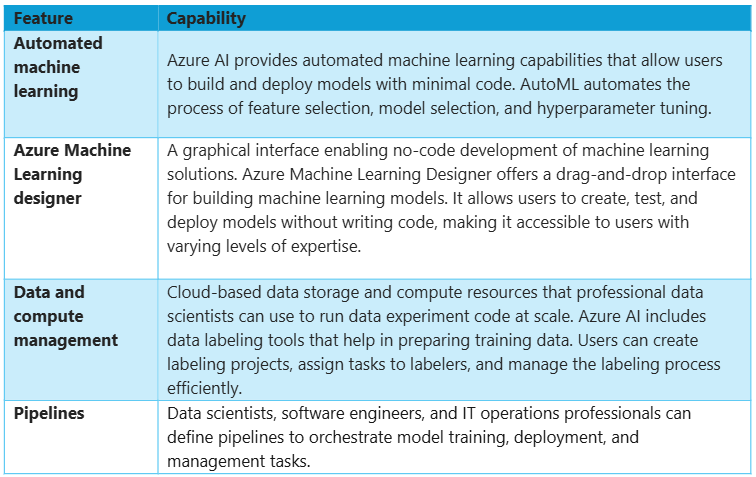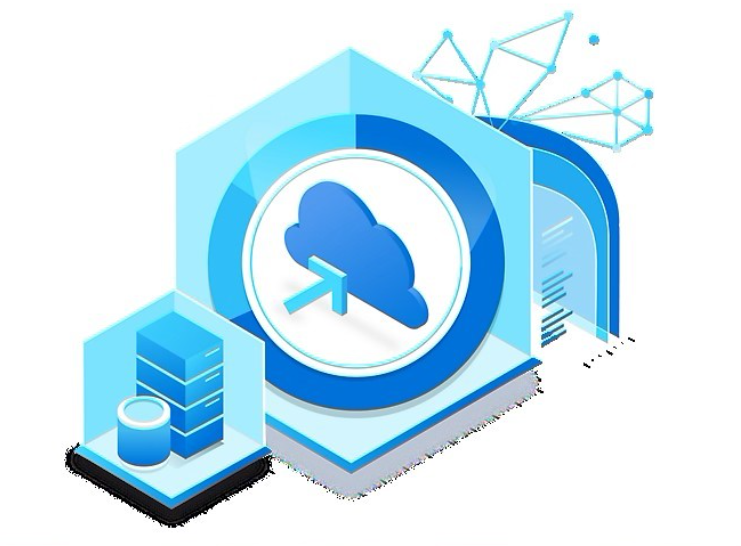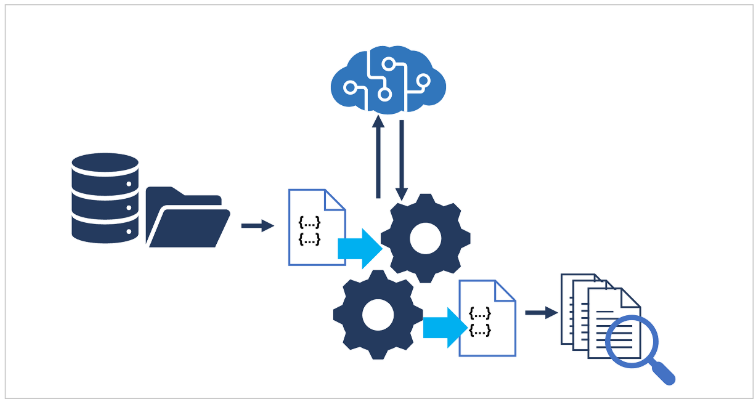Getting Started with Azure AI Services (AI-900/AI-102)
Getting Started with Azure AI Services (AI-900 / AI-102)
Azure AI services provide a comprehensive suite of tools and services to help you build, deploy, and manage AI solutions. In this guide we are going to give an overview of Azure AI and some of the core concepts of Aritificial Intelligence. This will give you the foundation as you proceed upon your AI studies for the AI-900 certificaton (Microsoft Azure Fundamentals exam) or decide to take things further by learning to implement Azure AI solutions with the AI-102 certification (Designing and Implement a Microsoft Azure AI Solution).
1. What is Azure AI?
Azure AI is a set of AI services and tools that enable you to integrate AI capabilities into your business applications. These services include pre-built AI models, customizable AI models, and tools for building and deploying your own AI models.
Before we get too deep into the Azure AI services, and I get it, the buzz is everywhere, but let’s clarify what we mean when we say Artificial Intelligence.
2. What is Artificial Intelligence?
Artificial Intelligence (AI) refers to the development of computer systems capable of performing tasks that typically require human intelligence. These tasks encompass a range of capabilities, including:
Visual Perception: The ability to process and interpret visual information from the world, enabling applications such as image and video analysis.
Text Analysis and Conversation: Utilizing natural language processing (NLP) to comprehend, generate, and respond to human language, facilitating interactions like chatbots and language translation.
Speech Recognition and Synthesis: Converting spoken language into text and vice versa, allowing for voice-activated systems and conversational agents.
Decision Making: Leveraging past experiences and learned patterns to make informed decisions, such as identifying anomalies in data and initiating appropriate actions.
Robotics: AI is used to develop robots that can perform tasks autonomously or semi-autonomously. This includes everything from manufacturing robots to drones and robotic surgery.
Generative AI: This involves creating new content, such as images, music, or text, based on existing data. Examples include AI-generated artwork and deepfake technology. This is a rapidly growing field of AI and probably the one you are most exposed to in the consumer world with services such as ChatGPT, Grok, Claude, and Gemini.
As you no doubt have seen, AI capabilities are increasingly integrated into everyday applications, enhancing user experiences and automating complex tasks.
Taking this a step further, it is important to understand some key AI-Related terms for the AI-102 exam.
AI-Related Terms: Understanding Key Concepts
Artificial Intelligence (AI): The simulation of human intelligence processes by machines, especially computer systems. These processes include learning (the acquisition of information and rules for using the information), reasoning (using rules to reach approximate or definite conclusions), and self-correction.
Machine Learning (ML): A subset of AI that involves the use of algorithms and statistical models to enable computers to improve their performance on a task through experience. ML algorithms build a model based on sample data, known as training data, to make predictions or decisions without being explicitly programmed to perform the task.
Deep Learning: A subset of machine learning that uses neural networks with many layers (deep neural networks) to analyze various factors of data. Deep learning models can achieve state-of-the-art accuracy in tasks such as image recognition, speech recognition, and natural language processing.
Natural Language Processing (NLP): A field of AI that focuses on the interaction between computers and humans through natural language. The ultimate goal of NLP is to enable computers to understand, interpret, and generate human language in a way that is both meaningful and useful.
Computer Vision: A field of AI that enables computers to interpret and make decisions based on visual data from the world. This includes tasks such as image recognition, object detection, and video analysis.
Neural Networks: A series of algorithms that attempt to recognize underlying relationships in a set of data through a process that mimics the way the human brain operates. Neural networks are the foundation of deep learning algorithms.
Reinforcement Learning: A type of machine learning where an agent learns to make decisions by taking actions in an environment to maximize some notion of cumulative reward. It is inspired by behavioral psychology and is used in various applications, including robotics, game playing, and autonomous vehicles.
Considerations for AI Engineers
When developing AI solutions, engineers must take into account several important considerations to ensure the effectiveness, fairness, and ethical use of AI technologies. Here are some key considerations for AI engineers:
Data Quality and Quantity: The success of AI models heavily depends on the quality and quantity of the data used for training. Engineers must ensure that the data is accurate, relevant, and representative of the problem domain. Additionally, sufficient data is required to train robust models that generalize well to new, unseen data.
Bias and Fairness: AI models can inadvertently learn and perpetuate biases present in the training data. Engineers must actively work to identify and mitigate biases to ensure that AI systems are fair and do not discriminate against any group. Techniques such as bias detection, fairness-aware algorithms, and diverse training datasets can help address these issues.
Ethical and Legal Considerations: AI engineers must be aware of the ethical and legal implications of their work. This includes ensuring compliance with data protection regulations, respecting user privacy, and considering the societal impact of AI technologies. Engineers should adhere to ethical guidelines and best practices to build trustworthy AI systems.
Model Interpretability and Transparency: It is crucial for AI models to be interpretable and transparent, especially in high-stakes applications such as healthcare and finance. Engineers should strive to develop models that provide clear explanations for their predictions and decisions. This helps build trust with users and allows for better debugging and improvement of the models.
Scalability and Performance: AI solutions must be designed to scale efficiently and perform well under various conditions. Engineers should consider the computational requirements, latency, and resource constraints of their models. Optimizing algorithms, leveraging cloud infrastructure, and using efficient data processing techniques can help achieve scalable and high-performance AI systems.
Taking all of the above into account, it is important to understand the term inferencing. This essentially means taking the model you have created in order to make predictions. In essence, you are taking the trained machine learning model to make predictions and possibly decisions based on brand new data. The model that you spent all the time training and acquiring knowledge in the training phase is now being applied to real-world scenarios. This is why it is vitaly important to take into consideration the ethical and legal considerations above.
AI can do a lot of good, but it also has the power to do a lot of harm.
Taking the above into account, it is important to create a guiding set of principles to apply as you rollout your AI initiatives:
Considerations for Responsible AI
When developing AI solutions, it is crucial to ensure that they are designed and deployed responsibly. Here are some key considerations for responsible AI:
Fairness and Bias Mitigation: AI systems should be designed to treat all individuals fairly and avoid perpetuating biases. This involves using diverse and representative datasets, implementing fairness-aware algorithms, and continuously monitoring and addressing any biases that may arise.
Transparency and Explainability: AI models should be transparent and provide clear explanations for their decisions. This helps build trust with users and allows for better understanding and debugging of the models. Techniques such as interpretable machine learning and model-agnostic explainability methods can be employed to achieve this.
Privacy and Security: Protecting user privacy and ensuring the security of AI systems is paramount. This includes implementing robust data protection measures, adhering to privacy regulations, and securing AI models against potential attacks or misuse.
Accountability and Governance: Establishing clear accountability and governance frameworks is essential for responsible AI. This involves defining roles and responsibilities, setting up oversight mechanisms, and ensuring that AI systems are used ethically and in compliance with legal and regulatory requirements.
Human-Centric Design: AI solutions should be designed with a focus on human needs and values. This includes involving diverse stakeholders in the design process, considering the societal impact of AI technologies, and ensuring that AI systems enhance human capabilities rather than replace them.
Azure AI Capabilities
Azure has a multitude of AI capabilities, and at first it can be truly overwhelming. In fact if you go to the Azure products page and filter under AI services you will see a whole host of options.
In fact there are so many services, and they are always changing, that Microsoft now has a page to help you choose the right service.
One of the major points of confusion that comes up early on is do I need to use Azure Machine Learning or Azure AI Services.
While Azure AI services and Azure Machine Learning both aim to enhance business operations with AI, they each offer different approaches.
The simplest way to compare them, is to think about who they are aimed at:
Azure AI services is tailored towards developers with little to no machine-learning experience.
Azure Machine Learning is tailored for data scientists
Azure AI Machine Learning Capabilities:
Data scientists can use Azure Machine Learning throughout the entire machine learning lifecycle to:
Ingest and prepare data.
Run experiments to explore data and train predictive models.
Deploy and manage trained models as web services.
Software engineers may interact with Azure Machine Learning in the following ways:
Using Automated Machine Learning or Azure Machine Learning designer to train machine learning models and deploy them as services that can be integrated into AI-enabled applications.
Collaborating with data scientists to deploy models based on common frameworks such as Scikit-Learn, PyTorch, and TensorFlow as web services, and consume them in applications.
Using Azure Machine Learning SDKs or command-line interface (CLI) scripts to orchestrate DevOps processes that manage versioning, deployment, and testing of machine learning models as part of an overall application delivery solution.
Platform engineers leverage Azure AI Machine Learning tools enabling organizations to:
Accelerate AI Adoption: Quickly bring AI solutions from concept to production.
Increase Efficiency: Automate repetitive tasks and optimize resource utilization.
Enhance Innovation: Provide flexible platforms that empower teams to experiment and innovate.
They also use these tools for operational use cases include:
Resource Monitoring: Utilizing Azure Monitor and Application Insights to track performance metrics.
Cost Management: Analyzing resource usage with Azure Cost Management to optimize spending and forecast expenses.
Identity and Access Management: Implementing Azure Active Directory (AAD) for secure authentication and authorization.
Data Encryption: Enforcing encryption at rest and in transit using Azure Key Vault for managing keys and secrets.
Compliance Standards: Aligning with regulatory standards like GDPR, HIPAA, or ISO certifications.
Azure AI Services
Imagine Azure AI Services as a dynamic collection of cloud-based tools that encapsulate artificial intelligence capabilities. Instead of a single, monolithic product, it's more like a set of individual services—each a building block you can combine to craft sophisticated and intelligent applications tailored to your needs.
These services span a wide range of prebuilt AI functionalities across various categories. For example:
Vision: Integrate image and video analysis into your apps.
Speech: Enable speech recognition and synthesis for natural interactions.
Language: Incorporate natural language understanding and translation.
Decision: Implement recommendations and anomaly detection.
Generative AI:
By leveraging these modular services, you can accelerate development, reduce complexity, and focus on innovation rather than building AI solutions from scratch. It's like having a toolbox filled with advanced tools ready to bring your ideas to life.
Azure Open AI Service
Generative AI is a thrilling frontier in artificial intelligence, advancing at lightning speed and transforming the way we interact with technology. At its essence, it focuses on AI models that generate content—whether that's text, images, code, or more—in a manner that feels strikingly like engaging with a real person in a genuine conversation. These models hinge on large language models (LLMs) based on transformer architectures, the culmination of years of machine learning progress. When you prompt these models with natural language, they respond with impressively accurate and contextually relevant answers, especially when guided effectively.
Azure OpenAI Service brings this cutting-edge technology to your fingertips. It's an Azure AI service designed for deploying, utilizing, and fine-tuning models developed by OpenAI. OpenAI, renowned for creating ChatGPT—one of the most popular AI applications capturing the world's attention—provides the powerful models that drive such conversational experiences. Through Azure OpenAI Service, you have access to these sophisticated generative AI models, allowing you to harness their capabilities for your own applications.
For AI engineers, this opens up a world of possibilities. You can develop applications that tap into the prowess of these advanced generative AI models within Azure OpenAI. Whether you're working with REST APIs or leveraging language-specific SDKs, the platform offers flexible options to integrate AI seamlessly into your solutions. It's like having a creative collaborator who can generate content, provide insights, and interact with users in dynamic ways.
Imagine building an app that not only understands user queries but responds with the nuance and depth of human conversation. With Azure OpenAI Service, that's not just possible—it's at your disposal. Dive in, experiment, and let your applications engage users like never before.
Azure AI Search
What is Azure AI Search?
At its core, Azure AI Search (previously Azure Cognitive search) is a enterprise knowledge retrieval system (or search-as-a-service system) that powers sophisticated Retrieval-augmented generation (RAG) applications and enterprise search engines. With advanced AI and search technology, and seamless platform integrations, Azure AI Search delivers end-to-end RAG systems built for app excellence, enterprise-readiness and speed to market.
It's not just about finding keywords; it's about understanding the meaning behind your data and delivering the most relevant results to your users.
Key Features
Intelligent Indexing and Search
Full-Text Search: Supports complex queries, including fuzzy searches, regex, and phonetic matching.
Multilingual Support: Handles content in multiple languages, making it ideal for global applications.
Synonyms and Stemming: Understands word variations and synonyms to improve search relevance.
AI-Powered Content Enrichment
Cognitive Skills: Leverage pre-built AI models to extract insights from unstructured data like text, images, and documents.
Language Detection: Automatically identify the language of your content.
Sentiment Analysis: Gauge the sentiment expressed in text data.
Key Phrase Extraction: Highlight important terms and concepts.
Image Analysis: Extract descriptions and tags from images.
Custom Skills: Integrate your own machine learning models or custom logic to enhance content processing.
Rich Query Experience
Faceted Navigation: Enable users to filter and refine search results dynamically.
Autocomplete and Suggestions: Improve user experience with instant suggestions as they type.
Geo-Search: Incorporate location-based search for spatial data.
Scalability and Reliability
Fully Managed Service: No need to manage infrastructure; Azure handles availability, scaling, and updates.
High Availability: Built-in redundancy and failover capabilities ensure consistent performance.
Security and Compliance
Role-Based Access Control: Secure your indexes with Azure Active Directory.
Encryption: Data is encrypted both at rest and in transit.
Compliance Certifications: Meets a broad set of international and industry-specific compliance standards.
How Does It Work?
Imagine the journey of your data through Azure Cognitive Search:
Data Ingestion
Connect to various data sources like Azure Blob Storage, Azure SQL Database, Cosmos DB, or even external sources.
Use data sources and indexers to automate data crawling and synchronization.
AI Enrichment Pipeline
As data is ingested, it passes through an AI enrichment pipeline.
Cognitive skills are applied to extract metadata and transform content.
For example, extracting text from image files or identifying entities in text.
Index Creation
Enriched data is organized into a search index—a structured format optimized for search queries.
Define custom schemas to suit your application's needs.
Search and Querying
Users interact with your application, sending search queries.
Azure Cognitive Search retrieves and ranks the most relevant documents based on the query.
Visual Representation:
Real-World Applications
Enterprise Document Search
Companies can empower employees to search across internal documents, PDFs, and reports.
AI enrichment extracts key information, making even scanned documents searchable.
E-Commerce Solutions
Provide customers with advanced product search capabilities.
Utilize filters, recommendations, and personalized search results.
Healthcare Knowledge Mining
Analyze vast amounts of medical literature and patient records.
Extract critical insights to support clinical decisions.
Ok,what about Azure AI Services? How do I get started playing with these?
Prerequisites
Before you start using Azure AI services, you need to have the following:
An Azure account: If you don't have one, you can create a free account at [Azure Free Account](https://azure.microsoft.com/en-us/free/). If you need more information, check out our AZ-900 training course which is completely free.
Basic knowledge of AI and machine learning concepts.
Familiarity with programming languages such as Python or C#. Microsoft has a great course on their learn site to help you get started with Python which you can find here > Python for beginners - Training | Microsoft Learn






